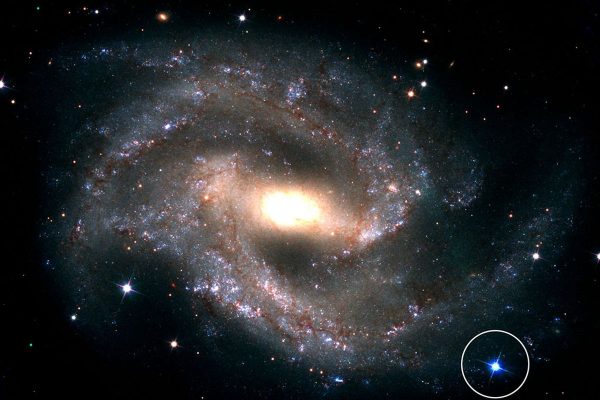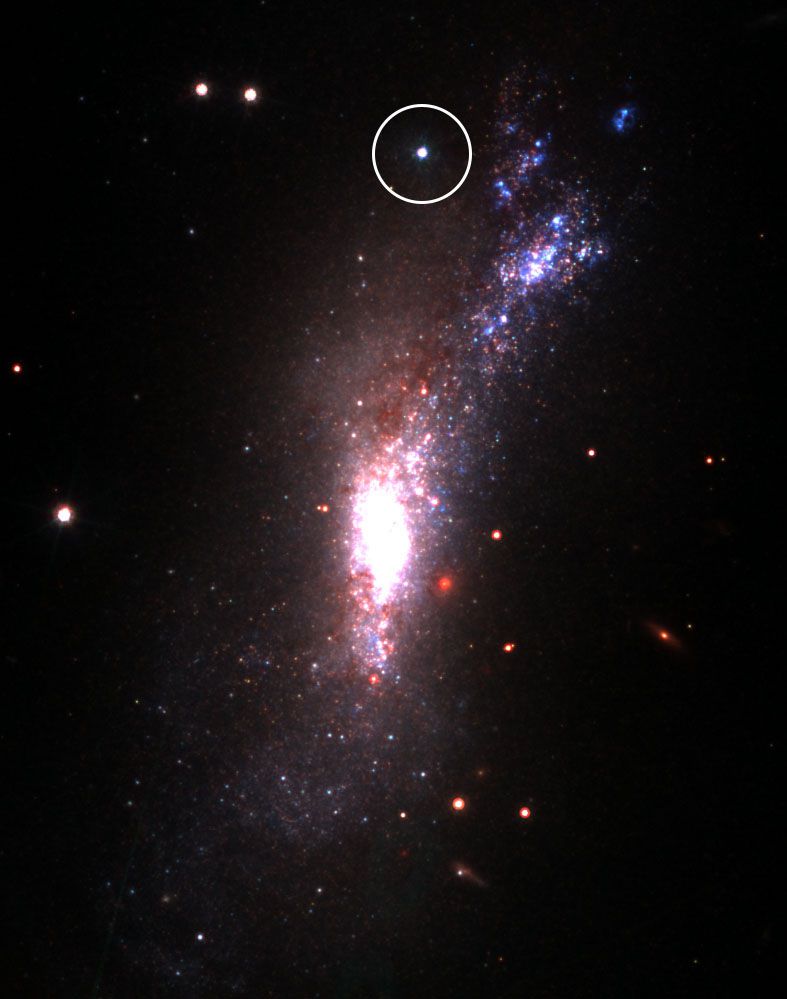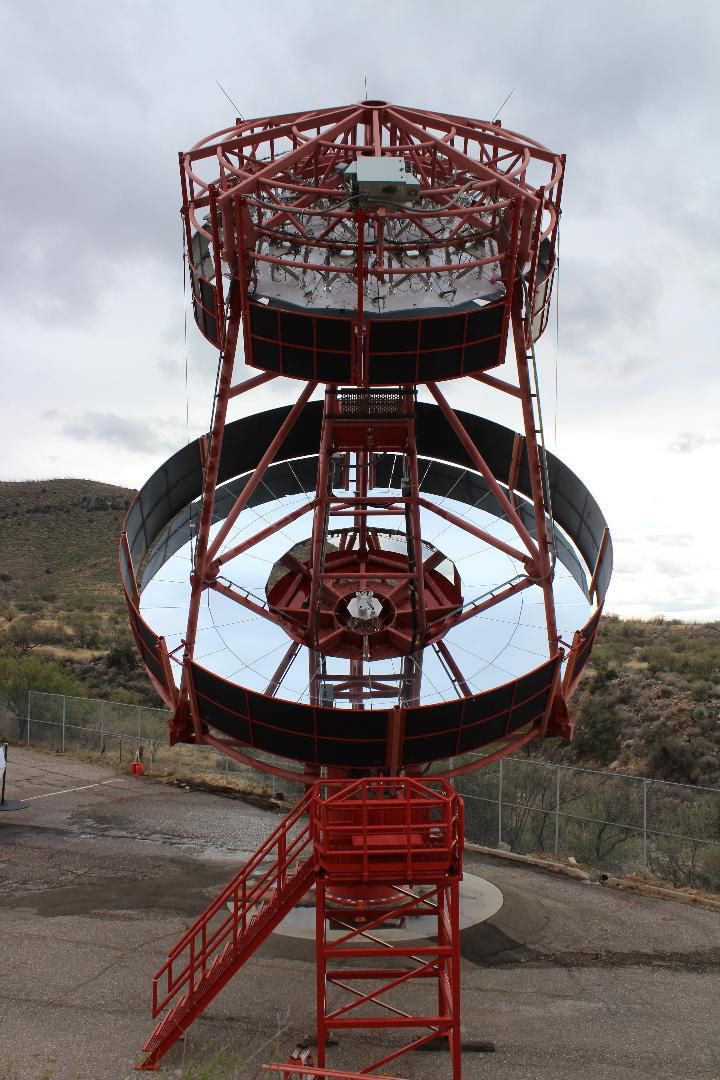
Joe Bauman: Utah native tells of latest discoveries in astronomy – Deseret News
Filed under:
Amy C. Oliver, a Utah native who works for the Harvard-Smithsonian Center for Astrophysics, recently shared research, including just-released findings on new types of supernovas
Editor’s note: A version of this has been previously published on the author’s website.
In a fascinating briefing, Amy C. Oliver, a Utah native who works for the Harvard-Smithsonian Center for Astrophysics, updated the Utah Astronomy Club on research the center has been carrying out, including just-released findings on new types of supernovas.

Oliver, who was born in Brigham City, attended Hunter High School in West Valley City and Southern Utah University; earned her bachelor’s degree at the University of Louisiana and her master’s at the University of Oklahoma; and is pursuing a doctorate at the University of Arizona. Following completion of her master’s degree, she worked at Clark Planetarium in Salt Lake City. She is the visitor and science center manager at the Fred Lawrence Whipple Observatory in Arizona, 40 miles from the Mexican border, and a public relations official for the center, which is based in Cambridge, Massachusetts. Oliver also is a NASA solar system ambassador for Arizona and Utah.
Whipple Observatory, atop 8,600-foot Mount Hopkins 43 miles south of Tucson, is part of the center’s Smithsonian Astrophysics Observatory. Oliver noted that the observatory benefits from extremely dark night skies, which are invaluable for astronomy. Its campus hosts several major telescopes, including VERITAS, which stands for the Very Energetic Radiation Imaging Telescope Array System, a set of four huge gamma-ray telescopes.
Club members who attended the meeting in the U.’s South Physics Building found themselves learning about strange events that happened many millions of light-years beyond Earth, and one that occurred almost 1 billion years ago. The talk was illustrated by views of remote galaxies, exploding stars, gigantic “hot” exoplanets in the black depths of space and a variety of telescopes.
Type Ia Supernovas have long-lasting plateaus
On Oct. 7, two days before the meeting, Oliver issued a news release about a discovery concerning supernovas that was picked up by media around the world. It began, “Scientists at the Center for Astrophysics | Harvard & Smithsonian have announced the discovery that, contrary to previously accepted knowledge, Type Ia supernovae experience light curve decline plateaus, and lengthy ones at that, lasting up to a year.”

Astronomers with the center disproved the long-held belief that only Type IIP supernovas have “plateaus” in their light curve. A Type IIP supernova occurs when a massive star runs out of fuel and explodes, leaving behind a neutron star or a black hole. Light from this type of supernova will begin to fade and then plateau, remaining steady, and then dwindle. “They maxed out at 100 days,” she said of the plateau. These factors are important to many cosmological models, she added.
The Ia supernova has a different origin involving a white dwarf star. A white dwarf is the remnant of an ordinary star that reached the end of its life, became a red giant, and saw most of its atmosphere puff away as a planetary nebula. Over time the gaseous nebula dissipates and normally a white dwarf slowly burns out. But in special conditions, when a white dwarf has a companion star, the dwarf’s gravity will pull material in from the companion or cause a merger.
“When the white dwarf reaches an estimated 1.4 times the current mass of the Sun, it can no longer sustain its own weight, and blows up,” according to NASA site exoplanets.nasa.gov. And, astronomers thought until recently, a Type I had no plateau as it dimmed out.
About 20 years ago, the scientific literature noted that something looked strange about a Ia supernova, but the indication wasn’t followed up at the time, she said.
According to Oliver, in 2015, CfA astronomer Or Graur noticed a strange light-curve pattern in a Type Ia supernova discovered in 2012 and designated SN 2012cg. Unable to get enough detail with an Earth-based telescope to figure out what was happening, he teamed with Adam Riess of Johns Hopkins University, Baltimore, who had time available on the Hubble Space Telescope to study the site. Riess, noted for his supernova studies, won the 2011 Nobel Prize in physics ”for the discovery of the accelerating expansion of the Universe through observations of distant supernovae.”
Using some of Riess’ time on the Hubble to make infrared views, “They looked at it (SN 2012cg) together and they said, ‘Woah. We’re a thousand days out (from the explosion) and there’s still a plateau,’” Oliver said. “So they started looking at other supernovae, other Type I. And they discovered that at about 500 to a thousand days out these supernovae in infrared were hitting a plateau, and it was lasting anywhere up to 360 days …
”It changes everything” that had been known about plateaus of supernovas. Oliver calls these Ia discoveries “slow-to-go” supernovas.
The team has confirmed five Type Ia supernovas where this is happening. “It took them about four years … but now they know exactly what they’re looking for.” The team hopes to eventually confirm 30. The scientific paper was published in Nature Astronomy on Oct. 7 (see www.nature.com/articles/s41550-019-0901-1).
The most massive star destruction
In November 2016, a Type I supernova was observed in connection with a previously-unrecorded galaxy a billion light-years from Earth. Supernova SN2016iet was far — 54,000 light-years — from the center of the host galaxy. It had two brightness peaks of about the same intensity, separated by 100 days. The observations were made with several telescopes, including a 47-inch-diameter optical instrument at the Whipple Observatory.
Conditions of the supernova were “incredibly long duration and large energy, unusual chemical fingerprints, and an environment poor in metals,” according to Oliver’s Aug. 15 news release. Metals, in astronomer-speak, are all the elements more complex than the two simplest, hydrogen and helium.
The conditions are like those expected from a never-before-seen type of gigantic explosion called a “pair-instability supernova,” where a supermassive star, in blowing up, creates pairs of matter and antimatter that utterly destroy the star. Nothing is left behind — not even a black hole. (A somewhat less-likely possibility, also never before documented, is that it was a “pulsational pair-instability supernova.” This sort of supernova, in slightly smaller stars, also creates matter-antimatter pairs that annihilate each other, but after enough material is eliminated, the remains undergo an ordinary supernova explosion and a black hole or neutron star results.)
Toward the end of its life, the star’s remaining core may have been between 55 and 120 times the mass of the Sun, having ejected 35 times the Sun’s mass in the final decade before the explosion, according to a verison of the study placed online at arxiv.org/pdf/1904.07259.pdf before the official publication. The star is thought to be similar to an extremely ancient stellar population. If so, studying it could help in understanding the early universe.
“It may be one of the very first observations of pair instability supernovae. … This is very exciting for scientists,” Oliver said. Because the reaction gobbled up all or most of the star, she called it “a really hungry supernova.”
Sebastian Gomez, a Harvard University graduate student, is the lead author of the paper announcing the discovery. It was published in the Astrophysical Journal of the American Astronomical Society on Aug. 15. According to the paper, no obvious equivalent has been reported in scientific literature and it did not quite jibe with theory; “we find that the inferred properties of SN 2016iet challenge existing models of such events.”
Measuring star diameters
Using gamma rays, the VERITAS array at the Fred Lawrence Whipple Observatory can make extremely precise measurements. They also are valuable for optical studies because of their great light-gathering ability. The four telescopes are nearly 40 feet across each, and they have 300 mirrors apiece. They surround the observatory base camp.
VERITAS’ telescopes are “some of the most sensitive in the world” for gamma rays, Oliver said.

In a paper published online at arxiv.org/pdf/1904.06324.pdf on April 12, astronomers described how VERITAS was used to determine star diameters with “a resolution never achieved before with optical measurements and represents an order of magnitude improvement over the equivalent lunar occultation method.”
Earlier direct measurement of star size involved a conjunction in which the moon passed in front of a nearby star. The star would begin to fade as the moon’s edge reached it and a little later it would blink out when it was completely covered. Since astronomers knew its approximate distance through other methods, they could calculate the size by the length of time the moon took to cover it.
But with a small or more distant star imaged by an ordinary telescope, the instant the moon approached the star would be blocked.
Since VERITAS has a vast surface area, it was able to gather enough light to allow for an extremely rapid series of images to be taken as stars were occulted by asteroids — both as they were going behind the asteroid and as they emerged. Knowing the asteroids’ speed, size and distance, and timing how long they took to block the stars (whose distances also were known) allowed precision measurement.

On Feb. 22, 2018, a star called TYC 5517-227-1 was timed as it went behind an asteroid named Imprinetta and emerged on the other side. The star’s diameter was calculated at 11 times that of our Sun. It proved to be a “K3III giant star,” something not certain before, the report says.
On May 22, 2018, the asteroid Penelope slid in front of the star TYC 278-748-1, as seen from the Whipple Observatory. At about 700 light-years away, Oliver said, the star’s diameter was calculated at close to twice the sun’s. The paper says its temperature is similar to that of our star.
The VERITAS system may be decommissioned in three or four years as the Cherenkov Telescope Array starts operating in the Atacama Desert, Chile, Oliver said, “but we may keep it.” Some impassioned papers have argued for its continued use, she added.
A telescope with an innovative design
The most recent telescope to be inaugurated at the Whipple Observatory is the Prototype Schwarzschild-Couder gamma ray telescope, inaugurated in January. Oliver said the unusual telescope is a test for devices to be built at the Cherenkov Telescope Array.
According to officials of the array, the prototype uses a “complex dual-mirror optical system (that) improves on the single-mirror designs traditionally used in gamma-ray telescopes.”
Gamma-ray telescopes are open to the elements, Oliver added, and must contend with snow, ice, dust storms, birds, animals and pests. Some of the aluminum coatings of the prototype’s mirrors are bubbling and peeling, she added. Knowing about such problems may allow scientists to solve them in advance of the construction of the telescopes in Chile.
Joe Bauman, a former Deseret News science reporter, writes an astronomy blog at the-nightly-news.com and is an avid amateur astronomer. His email is joe@the-nightly-news.com.




